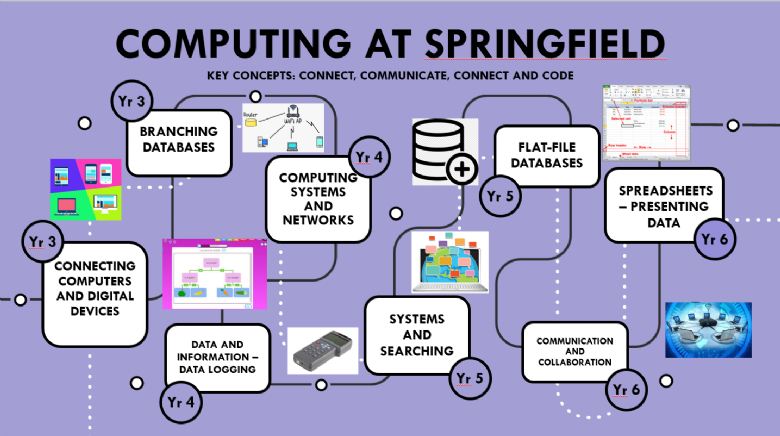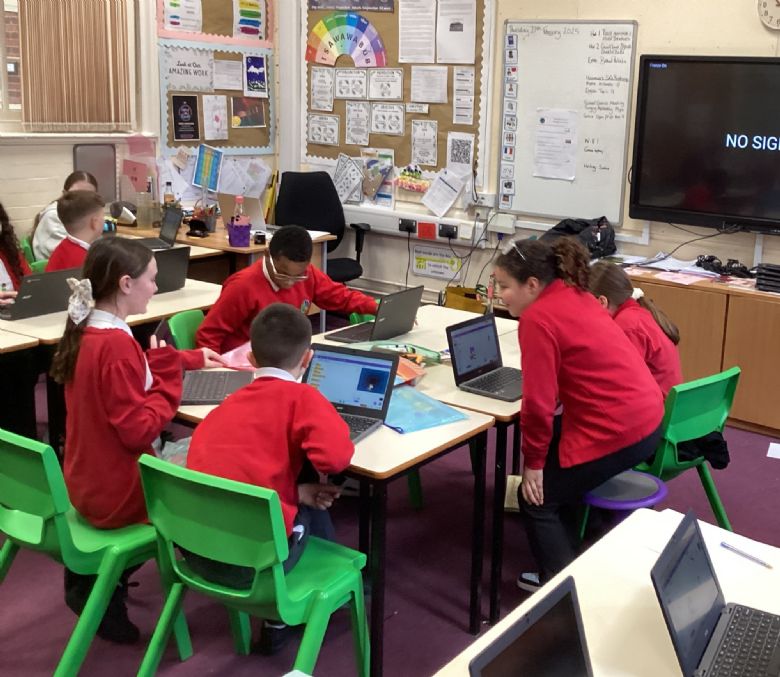COMPUTING
What is our aim with Computing at Springfield? (Intent)
Technology is forever changing. At Springfield Juniors, we prepare pupils for this changing digital landscape. The Computing Curriculum at Springfield Juniors engages pupils through using a range of digital devices and allows learners to develop their knowledge of online safety. We take pride in developing global citizens who make appropriate choices in both the online and offline world.
Within computing sessions, we aim to support pupils by:
- Using technology appropriately in a safe, considered and respectful way, reaping the benefits from an online world.
- Identify the exciting changes in a complex online world but discuss the challenges and risks which arise from this.
- Encourage responsible actions online and identify methods of how concerns can be raised with appropriate parties.
- Building the transferable skills required in the computing curriculum across other subject areas.
We support our children by:
- developing a creative approach to lessons, making adjustments so that all children can progress and reach their potential.
- using pupil voice to make adjustments to our curriculum.
- building aspiration by connecting learning to real life contexts.

What does this look like in our classrooms? (Implementation)
A clear progression of skills is implemented for pupils from Year 3 to Year 6, through the use of the Teach Computing scheme of work. Skills, within all areas of computing, are continually revisited and built upon to ensure that pupils make, or exceed, expected progress.
A range of resources are used by pupils to implement their learning: hardware such as, Crumbles, Micro:bits, iPads, Chromebooks and data loggers as well as various programming software, including Scratch, Audacity and Google Sites.
What are the outcomes for learners? (Impact)
The impact of pupil performance is monitored at Springfield Juniors. The role of the subject lead is to promote a passion for computing across the school and someone who can be utilised to share good practice and key skills with teaching staff and pupils alike.
Our computing curriculum will allow all pupils to develop their computing skills progressively as they move through the school, consistently reaching the expected standard in each year. This will be demonstrated in our ongoing assessments, the children's use of ICT in school and the children's understanding of their own online safety.
There are a number of further positive outcomes from the computing curriculum:
- A culture of openness is being created in school where pupils can share concerns they have online. Self-referral forms are available to pupils in all classes, which allow them to have a clear voice.
- Assembly themes carefully focus on online safety themes and revisit skills discussed in class.
- Regular access to electronic devices allows pupils to apply their computing skills, including coding, but also support those learners with SEND who may have had changes to the curriculum made, e.g. iPad apps which increase letter sizing or coloured backgrounds.
Mrs Viner, Online Safety Lead, would be more than happy to discuss any of these areas further.

